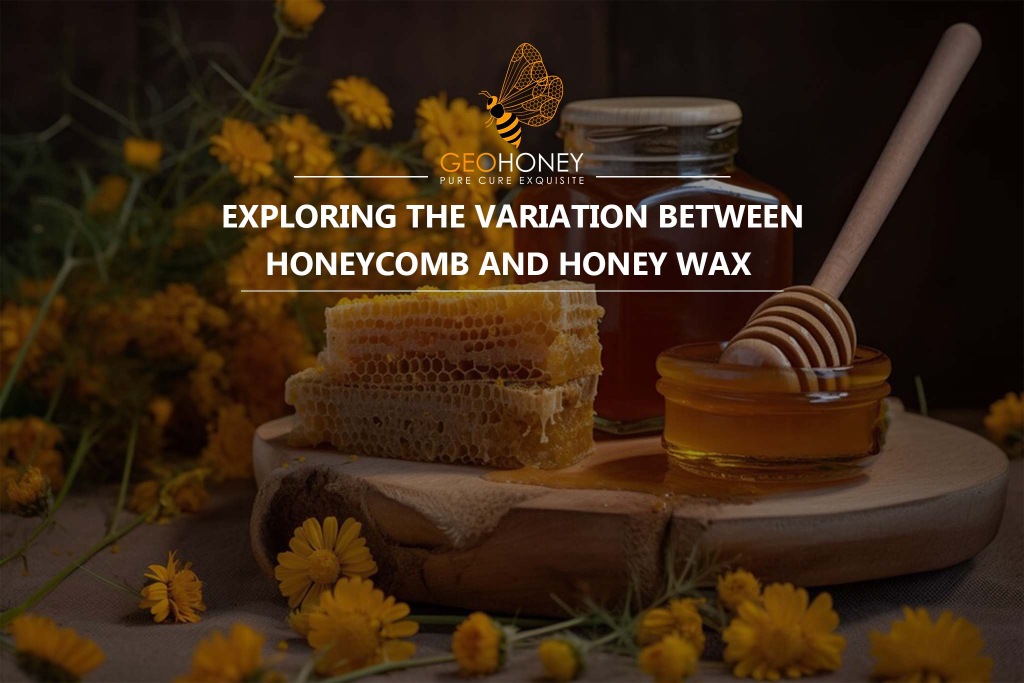- Tokyo: 10:17
- Singapore: 09:17
- Dubai: 05:17
- London: 01:17
- New York: 20:17
What is a Honeycomb? Is Honeycomb Different from Honey Wax?

Honeycomb is a remarkable creation of bees, comprising a cluster of hexagonal prismatic cells constructed from wax by honey bees within their nests. These cells serve the dual purpose of housing their brood (eggs, larvae, and pupae) and storing honey and bee pollen. Composed of both beeswax and honey, It is a natural marvel produced by bees. In this blog, we will delve into the captivating realm of honeycomb and elucidate the distinctions between honeycomb and honey wax.
What is a Honeycomb?
A honeycomb is a cluster of repeating hexagonal beeswax cells that act as a storage unit and haven for a honey bee hive. It is a natural and beautiful creation of bees that is used to store honey and raise young. It is made of beeswax, which is a natural wax secreted from the special glands of worker bees. It also contains honey and bee pollen, which are stored by bees for food.
How Do Bees Make Honeycomb
Bees make honeycomb by secreting wax out of glands in their underbelly. Only worker bees can secrete this wax by eating honey. The bees then use their mandibles to shape the wax into hexagonal cells, which they use to store honey and raise their young.
Are Honeycomb Cells Hexagonal
Its cells are hexagonal because bees use the hexagon as a structural building shape due to its simplicity, strength and durability. The hexagon is considered the strongest shape, and the six sides and six corners allow it to distribute weight and pressure evenly across its structure. The hexagonal tiling creates a partition with equal-sized cells while minimising the total perimeter of the cells. This is known in geometry as the honeycomb conjecture, which was mathematically proven by Thomas Hales.
The Architecture of Honeycomb
It is used by bees to store honey and raise their young. The vertical walls created by honeycomb cells in beehives provide a sturdy structure for the bees to store their food and raise their young. The architecture of the honeycomb is a marvel of nature and it serves as a potent natural remedy for a wide range of ailments, from skincare to infections to digestive problems. It is also used to store pollen, which is a vital source of protein for bees. We recommend checking out our encyclopaedia entry on honeycomb. It provides in-depth information on the structure and properties of honeycomb, as well as its many uses.
Uses of Honeycomb in the Hive
It has various uses in the hive, including brood raising and food storage. Honeycomb cells serve the colony in different ways, including honey storage, brood raising, and pollen storage. Honey is a bee’s energy source, so they want to make sure they have a lot of room for it and it’s protected. It is also used to store pollen, which is a vital source of protein for bees.
Is Honeycomb Different Than Honey Wax
It is made of wax and is used to store honey and raise young, while honey wax is a byproduct of honey extraction. Honey wax is the material that composes the walls of the honeycomb, allowing those beautiful little hexagons to form and fill with honey. Honey wax is used to make candles, cosmetics and other products.
Conclusion
It is a significant creation of bees that plays a vital role in our lives. It is a natural and beautiful creation of bees that is used to store honey and raise young. If you're interested in experiencing the wonders of honeycomb firsthand, don't forget to buy honeycomb from Geohoney, a trusted source, to buy honeycomb online and savour this natural marvel. We hope this blog has clarified the difference between honeycomb and honey wax and provided insight into the fascinating world of bees and their creations.




You can consume raw honey directly from the honeycomb, which is made from beeswax. Some health benefits may include improved liver function or heart health, but consuming large amounts may be harmful to your health.